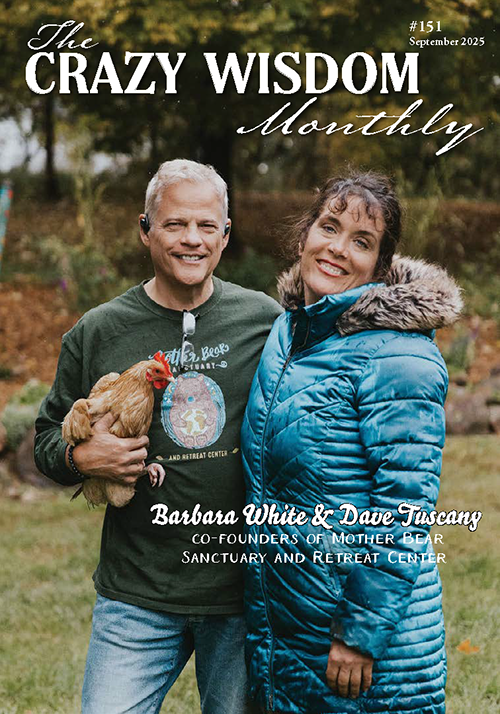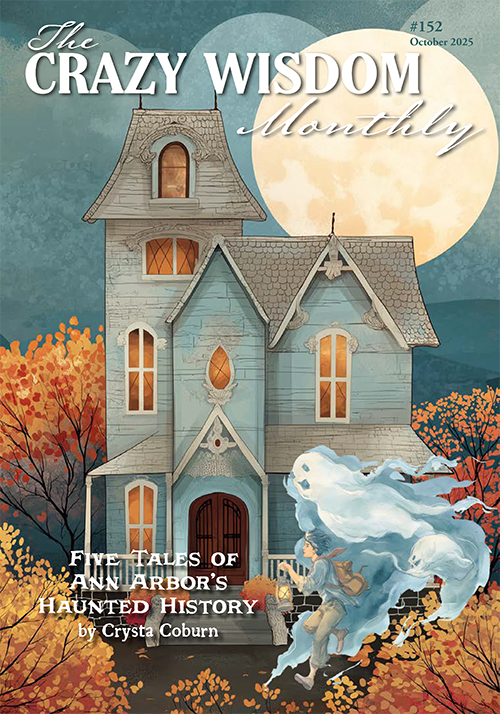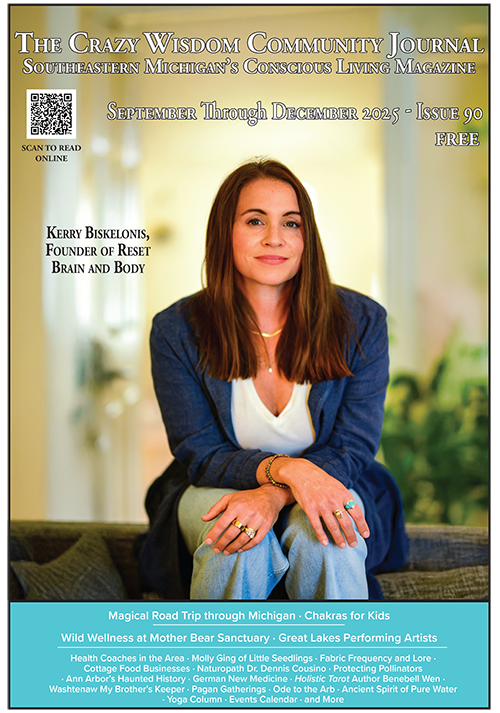Sibel Ozer is a licensed professional counselor and board-certified art therapist currently in private practice at The Parkway Center in Ann Arbor. Sibel contributed an essay on art therapy for our January through April 2014 issue, which you can read here.
By Sibel Ozer
In this first blog of the season, I will share with you three art therapy stories in hopes of giving you a sense of what may unfold in a session.
My Story
I’m from Turkey originally. I came here when our oldest, who is now 15, was one-and-a-half. People will often ask me if I like it here, if it’s hard to be away from country and family. My answer is that it is a mixed bag. While I like a lot of things about this country, there are things I might never get used to — or enjoy. (You never know, though, since I actually enjoy oatmeal for breakfast now, and appreciate a good bloody Halloween costume.) I’ll always miss the food, the smells, my friendships, the language, the humor. . .
You might think it overly sentimental, but there was a period in the early years where birthdays were especially difficult, even though I was in my 30s. I was enrolled in my masters in art therapy and leading a satisfied life of learning and parenting my two boys. I remember a particularly emotional birthday and a session with my Jungian therapist. I was missing home and that organic sense of belonging, being where I fit like a glove. I have never been a fan of sobbing, and since the emotions were threatening, had decided not to mention any of this to my therapist. We started our session with a sand tray inviting the images/symbols to arise from the unconscious and then moved into active visualization, which is a Jungian practice of inviting the image/symbol to become active in the mind — a type of awake dreaming.
““I was missing home and that organic sense of belonging, being where I fit like a glove.””
The problem with writing about transformative experiences is that words fall short in captivating the numinous, that sacredness of a moment, which, when described, could well appear quite ordinary. Long story long, I ended up finding myself surrounded by a family of seals and somehow could understand their language and was given a momentary experience of what my heart/soul most needed, which was that sense of belonging, that being a part of, which came with unconditional love and acceptance.
I don’t even have an affinity towards seals, like some other animals. This is another mystery of the therapeutic journey, how so often what ends up being healing is not something we could ever have thought up.
It is not always animals that come forward as healing agents, but they sure show up often in this kind of psychological work that engages the unconscious realm. I tried to capture the experience in a painting and whenever I should get anywhere near those feelings, all I have to do is look at it and the emotions will return for an embrace, and I will catch myself smiling.
"Belonging" 2004
The Power of the Blank Page
Honestly speaking, after my experience with the seals, I have not had to deal with that level of vulnerability around the issue of belonging, which is why I am so excited about the work I do and the potential to offer this type of transformation to my clients. This doesn't happen in every session of course, but I don't believe in deep, lasting change coming easily anyways; it is enough for me to know it is possible.
My second story of a powerful session is about a client in her late sixties who proved to me that it is never too late to overcome past trauma. She was emotionally neglected and abused by her family of origin, and then she married a man where the emotional abuse, though not as severe, continued in numerous disguised ways for over 30 years. She came to me for complicated grief, and before long, we were focused on her sense of self-worth. And now that she was free of those past relationships, she was able to experiment with achieving the things she wanted in life, as opposed to continuing to cater to others’ wishes in order to prevent real or imagined abuse.
We worked together for three years doing a combination of Jungian art and sand tray therapy and EMDR, so I don’t want to give you the impression that her transformation happened overnight. There were a few memorable sessions, though, and this one remains with me because of its simplicity. And because I remember struggling with it in my role of art therapist. And of course because she spoke of it numerous times afterwards, its impact on her.
It was a simple session of water coloring. We had been working with pastels for a while, and she said she’d always wanted to try watercolors. It is not my primary medium, which always worries me a little; I think, What if she asks me about technique and my lack of expertise gets in the way of her getting what she needs? I suggested that she start with wetting the watercolor paper, which is one way to begin.
She chose a medium size brush, which would lead to the preparatory stage lasting longer than if she had chosen a larger one. I could have suggested she do that and she would have likely obliged, but thankfully, I respected her choice. She kept on wetting the page for a good while (5 to 10 minutes) before I checked in with her about beginning to add color. She replied that she was rather enjoying this process and wanted to continue.
“There is a sense of something needing to happen in a session, a general assumption to complete a “cycle of experience,” which includes a beginning, middle, and end.”
A regular therapy session is 60 minutes, and art therapy sessions, because of preparation and my personal style, often last for one-and-a-half hours. There is a sense of something needing to happen in a session, a general assumption to complete a “cycle of experience,” which includes a beginning, middle, and end. Some projects are long-term; others can be completed in a single session. So I was sitting across from my client with my regular “monkey mind” thinking of what her choices might mean, thinking what to mention out of the myriad things I was observing, worrying that time was clicking and there seemed not much to be happening.
Except, she had this lovely Mona Lisa smile that communicated a sense of utter contentment. This was verified when I checked in with her, so I continued to practice watching my thoughts, emotions, and impulses and holding them as opposed to sharing them.
She spent the entire session preparing the paper, which turned out to be more of taking a stand against needing to do what was expected.
I would have never thought at the time that this was precisely what she needed and that it ended up having a powerful impact. She spent the entire session preparing the paper, which turned out to be more of taking a stand against needing to do what was expected. She ended up doing what she wanted from moment to moment, leading to the entire moments of the session, and the result was a wonderful, bold blank page. We framed it and kept it in the office for a while as a reminder.
We are definitely a product/progress/accomplishment oriented society and most of our psyches are deeply craving the opposite as a result. The permission to enter and stay in the non-doing is often a gigantic challenge for most of us, let alone someone who has spent a lifetime doing what is expected of her, since it meant survival.
My Final Story
When a client first comes in, I like to ask them what it is they would like to get out of a session, sometimes encouraging them to think beyond what they think is possible. A gentleman who was coming for grief counseling voiced his deep desire to know where his deceased partner was and that he was “doing okay.” Impossible, indeed . . .
I offered to do a guided imagery, which we often conclude with a sketch/drawing of what comes up to capture what mattered. I start with inviting the client to imagine a space and then begin to explore the qualities of that space using our five senses. The mind often gets in the mix, rarely in a helpful way, so it is a practice of mindfulness, of returning over and over to what one is seeing (in the mind’s eye), hearing, smelling, sensing, and so on.
He ended up walking toward a green meadow where a tiger was waiting for him. He moved closer and realized that the wild animal wanted to play with him. He chose to engage, and ended up wrestling playfully, noticing along the way that the tiger did a lot of personal gestures that were unique to him and his partner.
Once again, it is hard to explain why wrestling with a tiger would give this client what his soul desired, yet this is precisely what happened. His deep concern/worry was replaced by a big smile; he thanked me profusely and said that both his questions were answered. How many grieving people hear the words that their loved one is in a better place, or that they might be needed by God, or that they are where they’re supposed to be, and how rare these words meet the needs of the wounded, grieving, missing psyche.
““Expressive therapies are not magical tools or easy fixes, but ways that allow us to go about problem solving without relying on our brilliant minds alone.” ”
The world of images, symbols, and the unconscious is a source of healing that is potentially boundless. Expressive therapies (Some call Carl Jung the father) are not magical tools or easy fixes, but ways that allow us to go about problem solving without relying on our brilliant minds alone. There is a lot of suffering that is unavoidable and much that is unnecessary. I am grateful to know about these ways to help others and myself minimize the unnecessary and support them as they face the unavoidable.

































































































































































































Today, I am joined by three representatives of these secretive hidden peoples. Will you introduce yourselves, please?